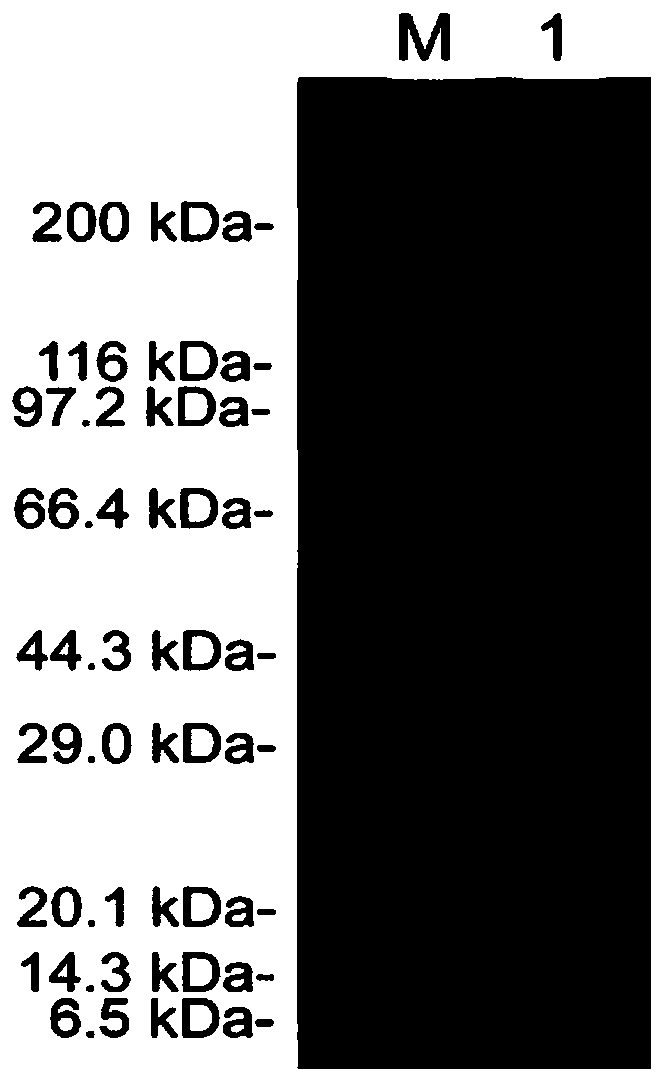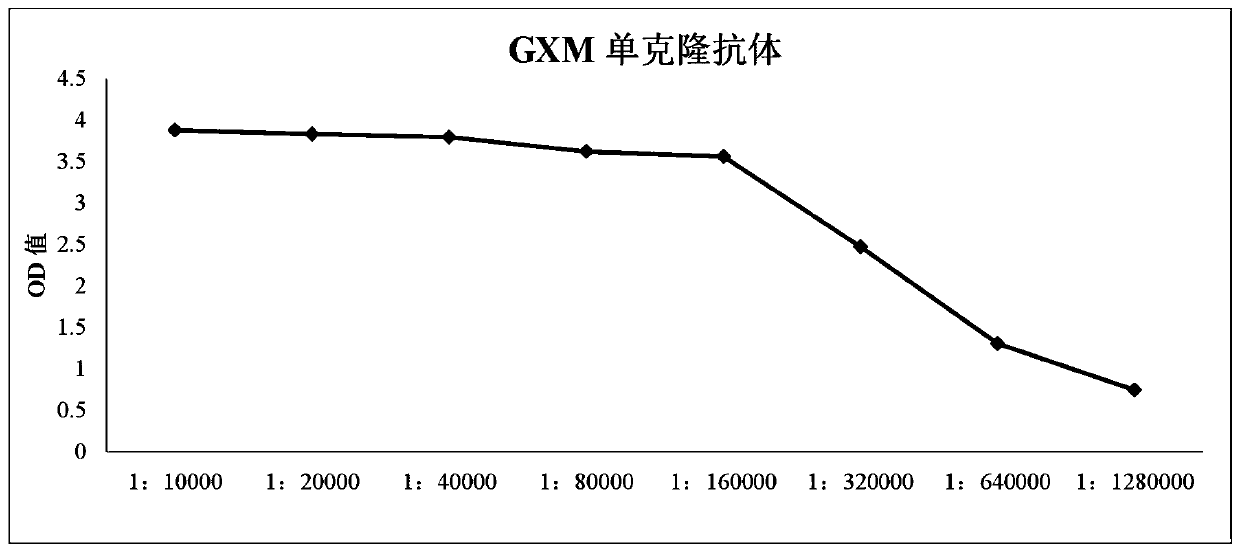Rabbit-derived monoclonal antibody against Cryptococcus capsular polysaccharide, and application thereof
A monoclonal antibody, rabbit-derived technology, applied in the direction of antibodies, applications, antifungal agents, etc., can solve the problems of weak affinity and poor specificity, and achieve the effect of strong affinity, good stability and strong affinity
- Summary
- Abstract
- Description
- Claims
- Application Information
AI Technical Summary
Problems solved by technology
Method used
Image
Examples
Embodiment 1
[0053] Embodiment 1 animal immunization
[0054] (1) Preparation of cryptococcal capsular polysaccharide (GXM)
[0055] Inoculate Cryptococcus in Sabouraud liquid medium (each liter of medium contains 1% peptone and 4% D-glucose), culture at 30°C for about 46 hours, and the shaker speed is 200rpm / min, when the pH value of the culture solution drops to Stop the culture at 4.2-4.5; sterilize the culture solution at 121°C for 40 minutes with damp heat to kill the bacteria and possible spores, and centrifuge the obtained bacterial solution to collect the supernatant;
[0056] After washing the bacteria with normal saline, slowly add calcium acetate powder to a final concentration of 5%, then add glacial acetic acid to adjust the pH to 5.0; slowly add three times the volume of 95% ethanol to the mixture, precipitate out, and stand at 4°C Overnight; collect the precipitate by centrifugation, dry, and redissolve with deionized water; add CTAB to treat the reconstituted solution, and...
Embodiment 2
[0063] Preparation and screening of embodiment 2 hybridoma cells
[0064] The titer of the prepared rabbit antiserum was tested, and if qualified, the rabbit spleen was used for cell fusion to prepare a monoclonal hybridoma cell line. The method is as follows:
[0065] (1) Preparation
[0066] The immunized New Zealand big-eared rabbits were killed, and the spleen was taken out under aseptic conditions, washed once with cell culture medium, ground, passed through a stainless steel screen, centrifuged and washed twice with cell culture medium;
[0067] Take SP2 / 0 myeloma cells in the logarithmic growth phase and mix them with splenocytes, wash once with cell culture medium without fetal bovine serum, centrifuge, discard the supernatant, add polyethylene glycol solution, and treat at a constant temperature of 37°C for about 90s; Terminate the reaction with cell culture medium without fetal bovine serum and centrifuge, resuspend the cells in HAT selection medium containing 20% ...
Embodiment 3
[0071] Example 3 Isolation of Antibody Variable Region Genes from Hybridoma Cells Using RT-PCR
[0072] After the hybridoma cells were homogenized, the cell lysate was added for RNA extraction, the RNA was precipitated from the aqueous layer with isopropanol, the precipitated RNA was washed after centrifugation, impurities were removed, and cDNA was obtained by reverse transcription after resuspension;
[0073] Use the specific primers of New Zealand big-eared rabbits for PCR, and use the hybridoma cell cDNA as a template to amplify the heavy and light chain variable region genes of the antibody. The 50 μL system contains 5 μL cDNA, HotStarTaq Plus enzyme, dNTPs and 0.5 μM specificity Primers, PCR amplification was carried out according to the following conditions: pre-denaturation at 94°C for 5min; 35 cycles at 94°C for 30s, 55°C for 30s, and 72°C for 50s; 72°C for 7min; the obtained PCR products were identified by 1% agarose gel electrophoresis, The target fragments were rec...
PUM
 Login to View More
Login to View More Abstract
Description
Claims
Application Information
 Login to View More
Login to View More - R&D
- Intellectual Property
- Life Sciences
- Materials
- Tech Scout
- Unparalleled Data Quality
- Higher Quality Content
- 60% Fewer Hallucinations
Browse by: Latest US Patents, China's latest patents, Technical Efficacy Thesaurus, Application Domain, Technology Topic, Popular Technical Reports.
© 2025 PatSnap. All rights reserved.Legal|Privacy policy|Modern Slavery Act Transparency Statement|Sitemap|About US| Contact US: help@patsnap.com



